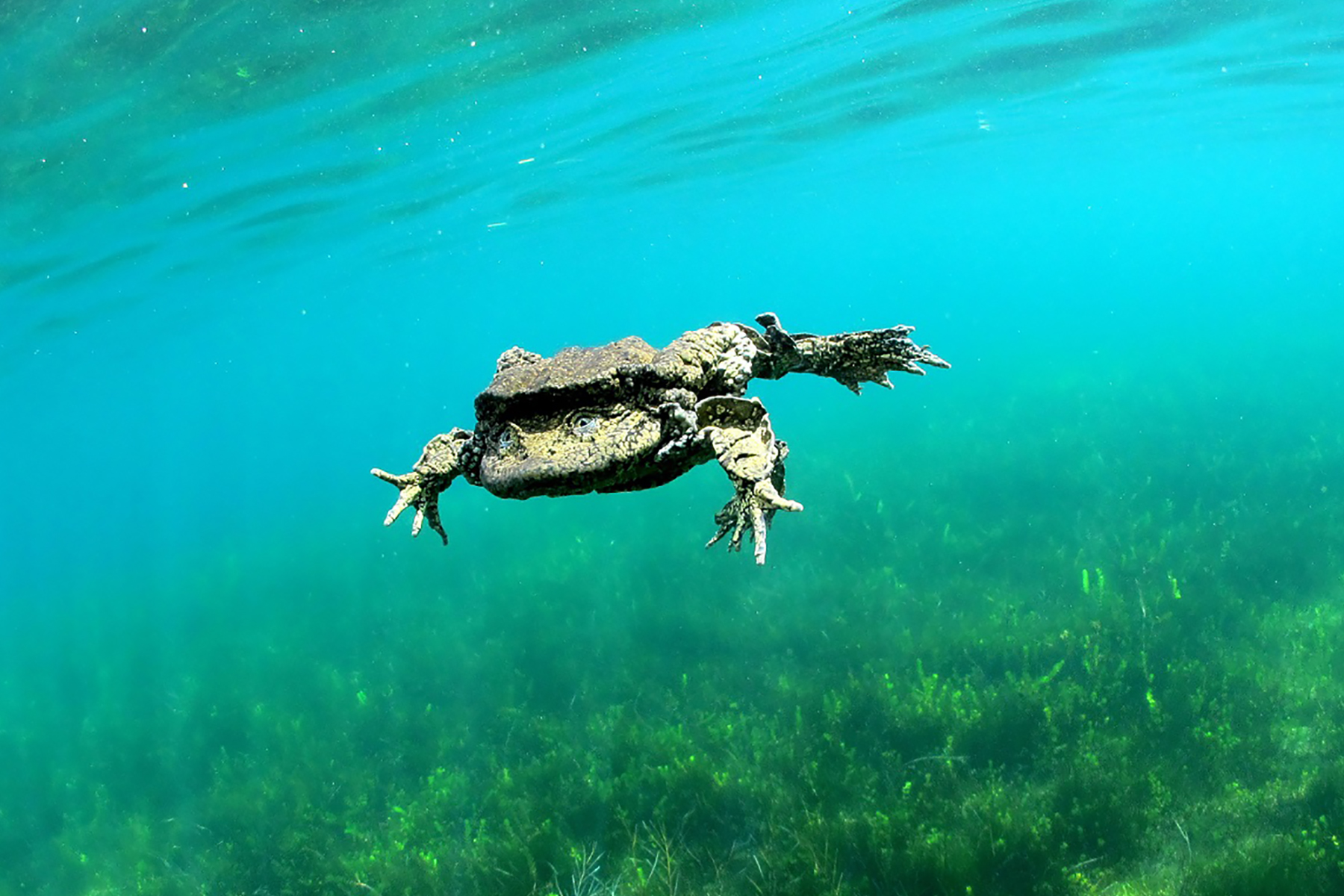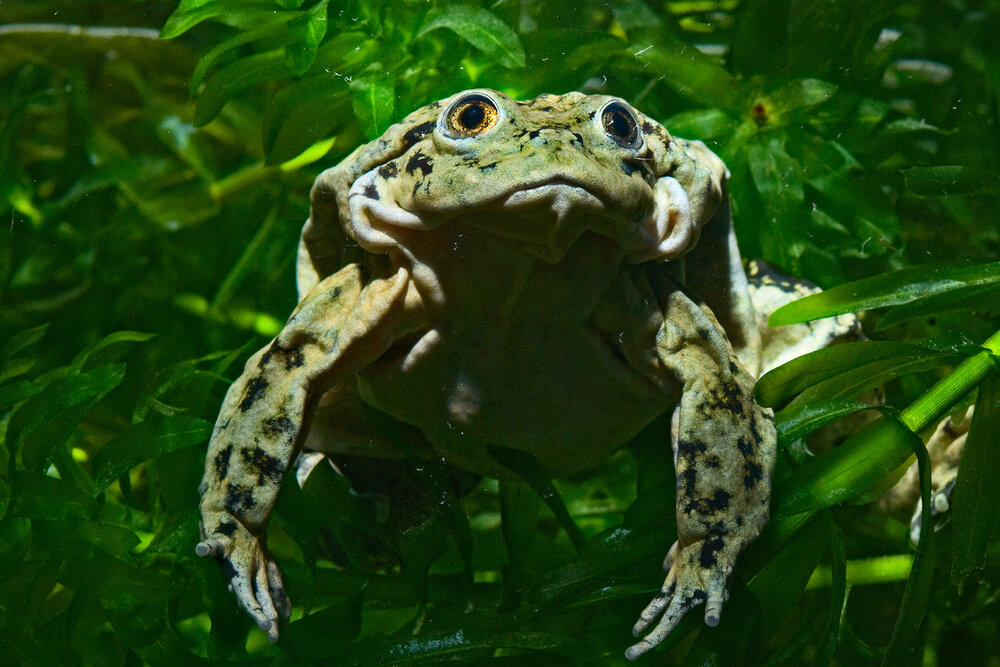
Titicaca water frog
Zoo Berlin supported studies into the critically endangered Titicaca water frog in Bolivia.
Project facts
- Project name
Bolivian Amphibian Initiative
- Species
Titicaca water frog (Telmatobius culeus)
- IUCN threatened status
Critically endangered (CR)
- Project location
Lake Titicaca, Bolivia
- Greatest threat
Water pollution; overfishing
- Response
Investigating the causes of the decline in the frog’s numbers; establishing conservation areas
Threat Categories of IUCN


Baggy-skinned amphibian
The Titicaca water frog is the world’s largest fully aquatic frog, growing up to 20 cm in length from head to rump. The frog’s excessive amount of skin makes it look rather as if it were wearing an oversized wetsuit. But these folds of skin perform an important function as they help the amphibian absorb more oxygen.
Only found in Titicaca
Situated high up in the Andes on the border between Peru and Bolivia, Lake Titicaca is the largest lake in South America. It is the only natural habitat of the Titicaca water frog. At 3,810 metres above sea level, oxygen is scarce, so the highly specialised amphibian has evolved a remarkable strategy to optimise its oxygen intake. But although – or rather because – the Titicaca water frog has adapted so marvellously to this single environment, it is now the most endangered amphibian species in Bolivia.
Troubled waters
In the coming years, protecting amphibians will be a crucial task for zoos around the world. In South America, in particular, large numbers of amphibians are at severe risk of extinction. The main reason for this is the spread of the chytrid fungus, which causes the deadly disease chytridiomycosis in amphibians. Water pollution caused by insecticides and pesticides used in agriculture also represents a serious threat to the animals.
The incredible disappearing frogs
Fishing is also having an impact on the Titicaca water frog. Frogs are often caught unintentionally or else robbed of their food sources due to overfishing. When famous underwater explorer Jacques Cousteau dived to the bottom of Lake Titicaca in the 1970s, he reported that thousands of Titicaca water frogs were living on the lake bed. But in the last three decades, the frog population has declined by 80 percent. The Titicaca water frog is therefore classified as “Critically endangered” on the IUCN Red List.
Prior conservation efforts
An initial pilot study by Asociación Armonía — BirdLife International investigated the various causes of the decline of the species back in 2008. In a first step, the study assessed the numbers of frogs being caught and killed. Researchers also tracked down the frogs’ most important spawning grounds so that they could develop targeted conservation strategies and actions. In 2011, researchers began recording the presence of the chytrid fungus in the remote lake, prompting an investigation into the spread of this fungus that is so lethal for amphibians. The project also introduced a monitoring programme, raised awareness in local communities of the need for environmental protection, and supported a Titicaca water frog breeding programme.
Mysterious mass mortality
In 2015, an alarming number of Titicaca water frogs were found dead in a 500 km² expanse on the Bolivian side of Lake Titicaca. In response, Zoo Berlin began working with Stiftung Artenschutz (Species Conservation Foundation) to help Titicaca water frog conservation efforts in Bolivia. Stiftung Artenschutz supports the emergency project Bolivian Amphibian Initiative, which is a collaboration between natural history museum Museo de Historia Natural Alcide d’Orbigny and research foundation Fundación para las Ciencias. The initiative is bringing much-needed help to the Titicaca water frog by monitoring the frogs’ situation in the wild while also breeding them in captivity so that, in the future, this unique species can be reintroduced in suitable conservation areas.
Photos: © Bolivian Amphibian Initiative

